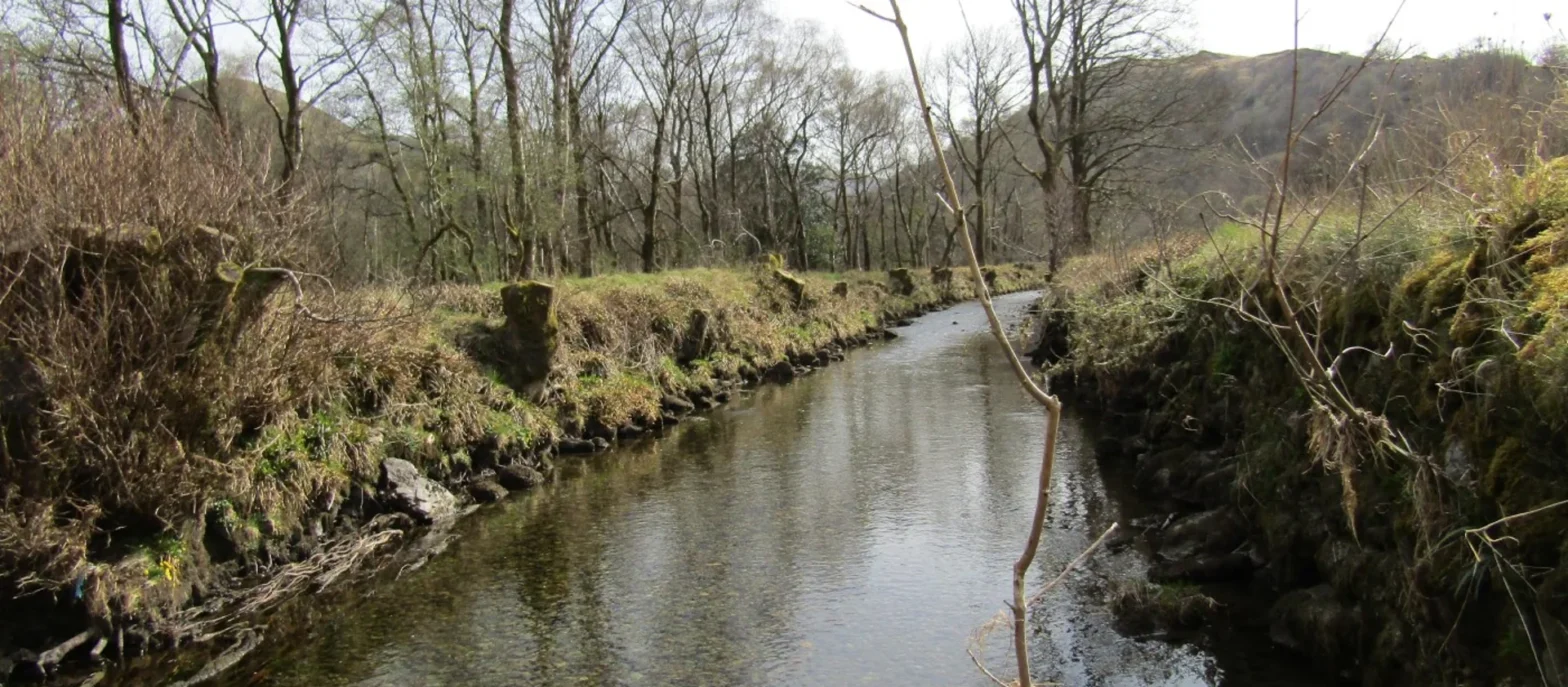In a recent blog post “Noisily Doing Nothing“. George Monbiot commented on an article that engineers draining rivers in the mid-20th century had no evidence as to the potential outcomes of their works on which to design such landscape changes.
However, I think that they did know what they were doing, and It is more pertinent to consider why they were doing it, straightening and shortening rivers. In my opinion that was all about the British Governments policy response to the threat of war rather than anything to do with a lack of ability on the engineers part. I will explain.
After WW1 the Forestry Commission was created “to restore the nation’s woods and forests” that had been depleted to sustain the war in the trenches. After WW2 though, the focus was on preventing the nation being starved out by a enemy blockade. These single focus policy responses had a huge impact upon the countryside and the agricultural and forestry industries that use that land. In the 1970’s and 80’s, in particular, the development of agricultural techniques allowed British farmers to drive the change needed to boost production aided by the policies of the recently joined European Economic Community, where high levels of subsidy payments were available to encourage this soon to be surplus production and which gave farmers great income rewards for a subsidised capital outlay.
For timber production, traditional British woodland management needed to be turned up a notch, into a Forestry Industry and the focus for that was to be the under-utilised area known as “the uplands”. In these vast endless wastelands, forestry could be imposed upon the landscape without impact and all that was needed was mechanisation and the introduction of foreign, fast growing softwood species that would yield the poor quality, bulk products needed to fuel a future war. Of course we now know how wrong that all was.
In parallel, increases in farm productivity in these marginal upland areas could be achieved by pushing back the limits to cultivation, improving the growing conditions in these thin soils by drainage and by replacing natural vegetation with highly productive short term grass leys. These poor farming communities suffered depopulation between the wars and this land was identified as an easy location into which Conifer plantation forestry could be imposed at scale. Increased agricultural production here though meant sheep and cattle, bigger continental breeds that it was thought could be grazed at higher densities on the newly drained and more productive grasslands. When matched with large modern buildings, these greater numbers of livestock could be housed indoors in areas where they would previously been too soft to thrive. Or so it was believed.
In addition and sometimes over looked, the difficulties in making hay in small steeply sloping fields with poor soils in areas of high rainfall required the adoption of a new approach to grass preservation for winter fodder. This approach was a product called silage.
All this meant that drainage was required to drain those boggy areas that made growing trees and grass so difficult; and that’s where the engineers come in! They recognised that to secure the desired production advantages of drier soils in these target areas that they needed to get the excess water away from the individual farmers land as quickly as possible. That meant land drainage, often with substantial Government grants (AHDS and FHDS) administered by MAFF, paid for in substantial part by the tax payer. Then the National Rivers Authority stepped in to pay for the rivers to be straightened to take this soil drainage water away in new, large, straight channels as quickly as possible.
All this was water was then imposed upon an unaware lowland community, both rural and urban, more quickly than ever before and without the capacity to manage the volume. The inevitable consequence was lowland flooding in places like the Vale of York, Tewkesbury and the Thames Valley.
So, the objective of bigger crops of trees and of grass silage to feed these more productive livestock was all at the expense of the flood-prone lowlands and of course in the 70’s and 80’s, no one knew any better, least of all the Government.
Today, the added effects of climate change make the impacts of this remodeling of upland rivers all the more catastrophic and the need to mitigate those effects more pressing. This requires the undoing of those engineers works to speed up the passage of water through these upland landscapes through a combination of rewildng those river channels and in future allowing natural River processes to take place. Slowing the flow. More work for the engineers! And who knows, under the Government’s proposals for a new a environmental Land Management scheme, maybe even capital and revenue support to farmers and landowners to make these changes, back to a more natural wild landscape?!
